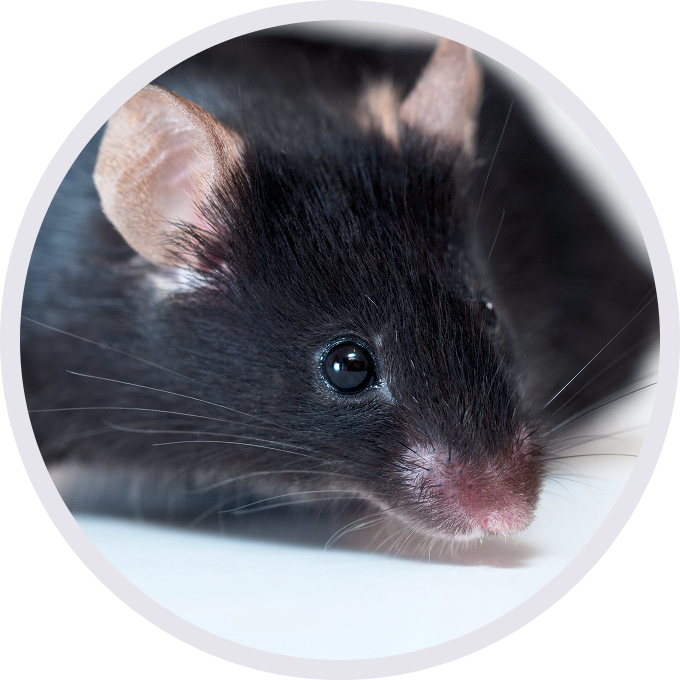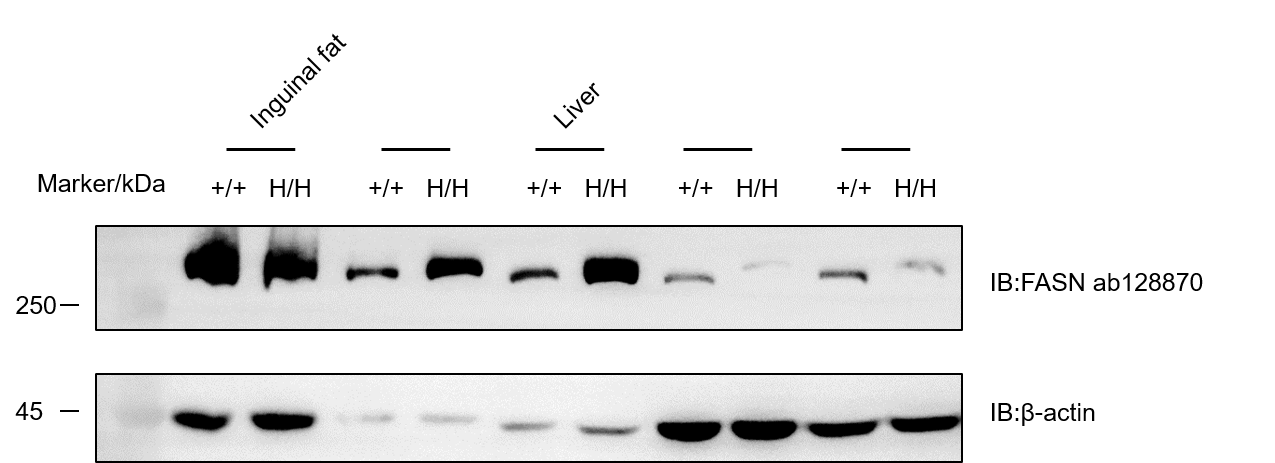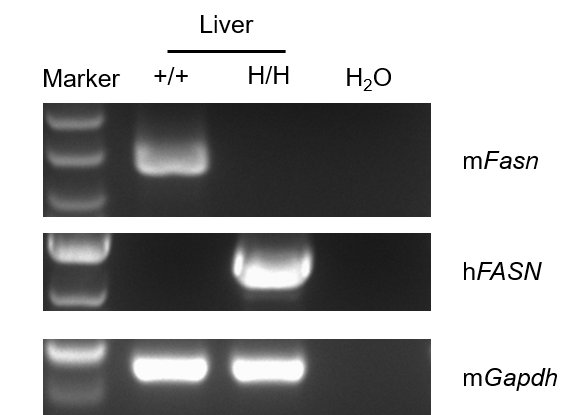
C57BL/6JNifdc-Fasntm1(FASN)Bcgen/Bcgen • 113533
Background: Fatty acid synthase (FASN) primarily participates in the de novo synthesis of endogenous fatty acids within cells. It is expressed at low levels in most normal tissues; however, it is highly expressed in liver and adipose tissue cells. FASN is upregulated during the late stages of differentiation, where it contributes to lipid droplet formation in adipocytes. FASN inhibitors can suppress adipocyte growth, differentiation, and maturation, with potential indications for obesity and hyperlipidemia.
Targeting strategy: The exons 1-43 of mouse Fasn gene that encode the whole molecule (ATG to STOP codon), including the promoter, 5’UTR and 3’UTR were replaced by human region in B-hFASN mice. The human FASN expression is driven by endogenous human FASN promoter, while mouse Fasn gene transcription and translation will be disrupted.
Validation: Human FASN protein was detectable in homozygous B-hFASN mice. Mouse Fasn mRNA was exclusively detectable in C57BL/6JNifdc. Human FASN mRNA was exclusively detectable in homozygous B-hFASN mice.
Application:Applied to the efficacy evaluation and toxicity assessment of small nucleic acid drugs and inhibitors in the field of obesity.
Gene targeting strategy for B-hFASN mice. The exons 1-43 of mouse Fasn gene that encode the whole molecule (ATG to STOP codon), including the promoter, 5’UTR and 3’UTR were replaced by human region in B-hFASN mice. The human FASN expression is driven by endogenous human FASN promoter, while mouse Fasn gene transcription and translation will be disrupted.

Western blot analysis of FASN protein expression in wild-type C57BL/6JNifdc and homozygous B-hFASN mice. Various tissue lysates were collected from wild-type C57BL/6JNifdc mice (+/+) and homozygous B-hFASN mice (H/H) (male, 6-week-old), and then analyzed by western blot with anti-FASN antibody(Abcam, ab128870). 40 μg total proteins were loaded for western blotting analysis. Mouse FASN expression was detected in the inguinal fat, genital fat, liver, brain and spleen of C57BL/6JNifdc mice. Human FASN expression was detected in the inguinal fat, genital fat, liver, brain and spleen of homozygous B-hFASN mice.

Strain specific analysis of FASN mRNA expression in wild-type C57BL/6JNifdc and B-hFASN mice by RT-PCR. Liver RNA were isolated from wild-type C57BL/6JNifdc (+/+) and homozygous B-hFASN mice (H/H), then cDNA libraries were synthesized by reverse transcription, followed by PCR with mouse and human FASN primers. Mouse Fasn mRNA was exclusively detectable in C57BL/6JNifdc. Human FASN mRNA was exclusively detectable in homozygous B-hFASN mice.